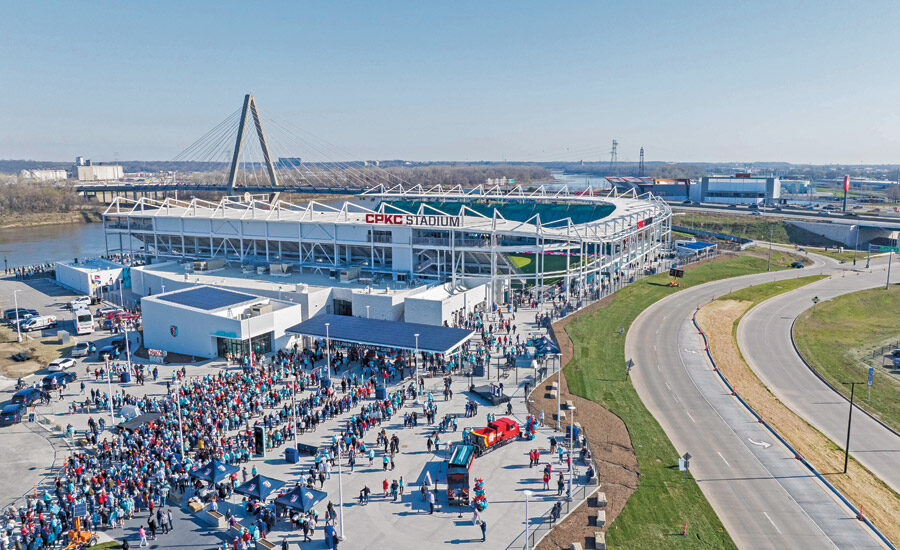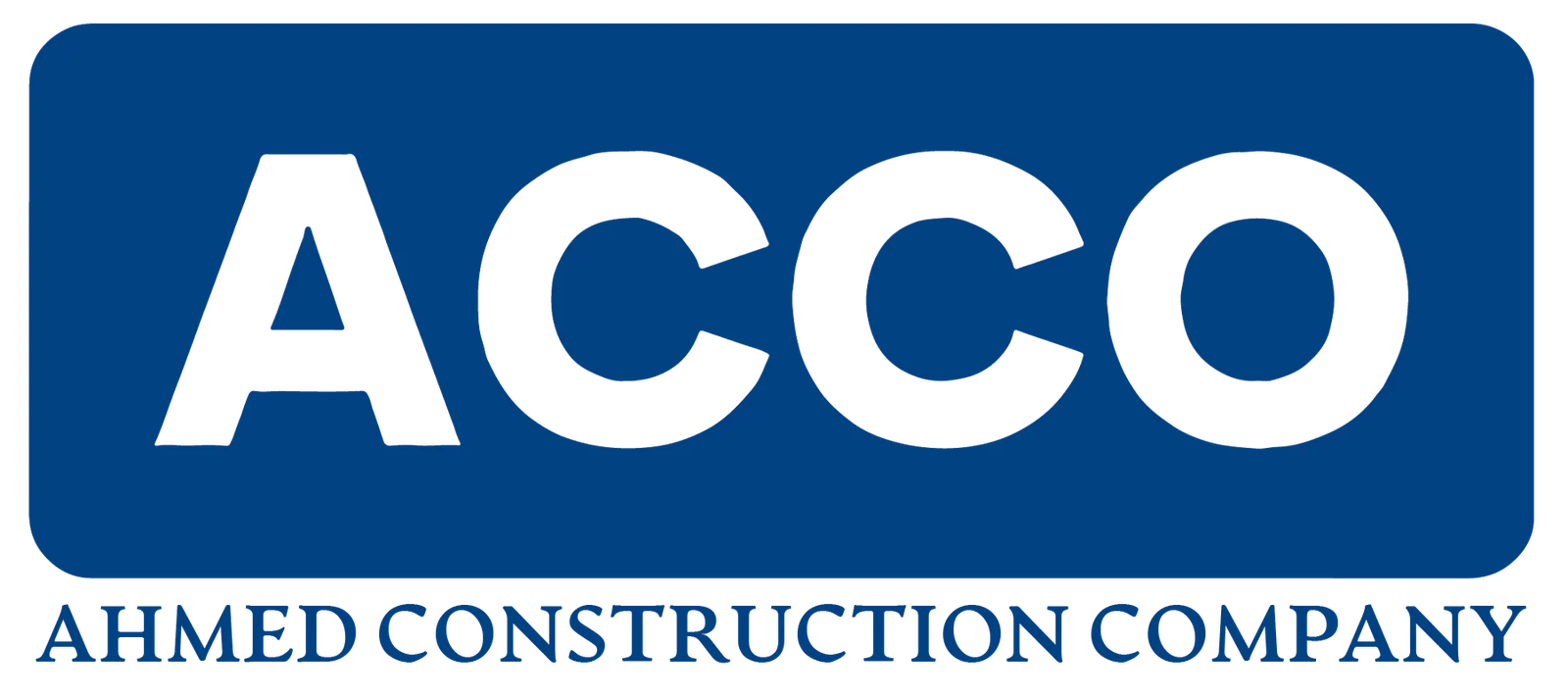
CPKC Stadium Ushers in a New Sports Era
The world’s first stadium built for a women’s professional sports team opened in 2024, signifying a huge step forward in women’s soccer and athletics globally.
It also is playing a pivotal role in reshaping Kansas City’s downtown urban landscape.
The $140-million CPKC Stadium, home to the Kansas City Current professional women’s soccer team, spans 7 acres, boasts 11,500 seats, luxury suites and various amenities including pitch-side seats, a club lounge and community plaza areas.
Located within the city’s Berkley Riverfront Park, the stadium is positioned to have a leading role in transforming future development in the downtown area, which is adjacent to the Missouri River and had not previously been the site of a professional sports venue.
The stadium is just one part of a multiphase, $1-billion riverfront development project led by Chris and Angie Long and taking place over the next few years.
In recognition of their forward-thinking support of professional women’s sports and their efforts to beautify and boost economic and community development in Kansas City, ENR Midwest has named the ownership team of Chris and Angie Long as its 2025 Owner of the Year.
Construction of the second phase, which kicked off in late 2024, includes development of two multifamily residential buildings containing 430 units, 48,000 sq ft of retail and other elements to beautify the riverfront.
Future phases will commence as early as 2026 and may include additional riverfront mixed-use amenities such as office, lodging and other entertainment uses.

From left, Patrick Mahomes, Brittany Mahomes, Chris Long and Angie Long—co-owners of the Kansas City Current.
Photo courtesy of the Kansas City Current
Background
The Longs are the founders of Palmer Square Capital Management, a firm established in 2009 that manages $33 billion in private wealth. Passionate supporters of women’s sports, they ventured into team ownership during the COVID-19 pandemic.
“I think, with a project of this size, a best in class way to do it is to make sure it speaks to your community and is authentic to the culture.”
—Angie Long, Co-Owner, Kansas City Current
On Dec. 6, 2020, they acquired the Kansas City Current roster, previously the Utah Royals, and were immediately faced with the challenge of housing the athletes and providing them with a playing field.
“We had no options outside of a minor league baseball park, but [the Kansas City Monarchs] were gracious enough to let us play on it,” Chris Long recalls. “We would move the pitching mound, put in temporary seating and completely transform the field for every game.”
For a couple of years, the team also played at a men’s soccer team stadium owned by Sporting Kansas City. However, the Longs were determined to establish a dedicated stadium—one that would not only serve as a premier stadium for women’s sports but also stand as a world-class sports stadium overall.
Learning Curve
Upon deciding to build the CPKC Stadium, the Longs immersed themselves in learning about stadium construction.
“My wife and I are partners in everything,” Chris Long says. “We did a stadium and arena tour to get the best ideas. We asked questions [of other owners] about ‘What did you do well?’ A few owners said that they had not been involved enough in the details.”
Their next step was deciding on a location, which took them to downtown Kansas City.
“We wanted, from the beginning, to be in an area that could be multimodal and accessible to all,” Angie Long says. “We wanted to be the first downtown stadium for Kansas City, and we really fell in love with the concept of the Current playing a role in bringing people back to the water and to the power of the Missouri River.”
Another attraction was the site’s location in a reclamation zone that the city had been trying to beautify for years.
“That was the icing on the cake,” Chris Long says. “For every dollar invested, there was an incredible multiplier.”
As appealing as the downtown site was, it also created some early challenges.
“There weren’t good records or studies of the site, but because of the lack of infrastructure, we got tax credits to help with that study and to get going,” Angie Long says.

Chris and Angie Long break ground after visiting stadiums around the country to learn from other owners about stadium design.
Photo courtesy of the Kansas City Current
Sitework
Preparing the site required collaboration and coordination between the project team, which was led by a joint venture of two Kansas City-based firms—JE Dunn and Monarch Build. The team worked along with the U.S. Army Corps of Engineers.
That collaboration was particularly important when establishing the elevation of the playing surface. The design team had to plan for how potential groundwater and varying river elevations would impact the design of the unique subsurface air and field drainage systems, says Scott Sherry, vice president of JE Dunn.
In addition to coordinating pitch design, which took into account the fluctuating river conditions, an existing 54-in.-dia concrete storm sewer line was discovered, extending from one corner of the site to the other, and it needed to remain in place and active.
“This required detailed coordination of the installation of auger cast pile foundations supporting the grandstand bowl structure that were strategically located around the sewer pipe, in many cases bridging the pipe,” Sherry says. “Furthermore, due to the age of the sewer and the requirement to leave it in place, the project team had to reline the pipe to ensure its performance for years to come.”
With a groundbreaking held on Oct. 6, 2022, the Longs and their construction team were under a tight deadline to complete the project by March 16, 2024, when the Current was scheduled to play its home opener in their new digs.
“Because of the fast-track [schedule], we had to coordinate lead times and get materials on site quickly for construction.”
—Courtney Kounkel, Owner, Monarch Build
“Because of the fast-track [schedule], we had to coordinate lead times and get materials on site quickly for construction,” says Courtney Kounkel, founder and owner of Monarch Build. “The seating, treads and risers had to be ordered before there was a design.”
Supply chain delays, particularly during the pandemic, and fluctuating costs of materials were other challenges that the Longs and their team handled by monitoring prices and buying at the best time.
“We watched the cost of aluminum and collectively figured out the right time to strike to get the best price,” Kounkel says.
Harkening back to what they learned about paying attention to the details during their stadium construction tour, the Longs were actively involved in every facet of the project.
“Angie met with us every week if not every day,” Kounkel says. “The communication lines were always open. There was never a day or time of day that we could not reach out to them.”

The project team planned for how groundwater and varying river levels would impact the field design.
Photo courtesy of the Kansas City Current
Gathering Place
The Longs wanted the stadium to be not just a home for the Current, but also a place for hosting other community and sporting events. The stadium recently welcomed the Kansas City Asian American, Native Hawaiian and Pacific Islander Heritage Festival and the 2024 National Women’s Soccer League x Liga MX Femenil Summer Cup, and it will host the 2025 NCAA Division I Women’s College Cup and the 2026 NCAA Division II Women’s and Men’s Soccer Championships.
The Longs also strived to make sure the stadium reflected the unique history and culture of Kansas City.
“I think with any project of this magnitude, a best in class way to do it is to make sure it speaks to your community and is authentic to the culture,” Angie Long says.
She describes the stadium as having a “Kansas City Art Deco feel” and says one of the best barbecue restaurants in the city is in the stadium.
Interest in the stadium, even during construction, was high, and Sherry says a safety plan was developed and enforced for all site visitors.
“With the enthusiasm surrounding this stadium’s profound influence on women’s sports across the nation, there was a notable number of visitors throughout construction,” Sherry says. “Recognizing the site’s lively nature, [having an emphasis on] safety for all individuals on the site was paramount.”
The facility, which is LEED Gold certified, also emphasizes sustainability, featuring 180 REC Pure-R solar panels that produce approximately 100,000 kWh of energy annually—along with additional solar panels atop the main gate entrance and team store—generating the energy equivalent of 70,000 lb of coal.
Low emission and locally sourced materials were chosen when possible to mitigate emissions related to transporting materials. In addition, native, low-maintenance plants surround the stadium to decrease water usage and eliminate the need for chemicals.
Given the stadium’s focus on supporting women’s sports, it’s only natural that the team that built the stadium had a high representation of women—50% of the construction team leaders were women.
“They weren’t on this project because they were women. They were part of it because they are good,” Sherry says.
Crowning Achievement
Seeing their vision become reality and hearing the crowds cheer on the stadium’s opening day was particularly sweet for the Longs.
“There were a lot of joyous tears,” Chris Long says. “We put so much blood, sweat and tears and late nights into it, just hoping that our community and players would receive it in the way we wanted. Opening day exceeded our best dreams, and it was hard to leave that day. I wanted to sit there forever.”
Post a Comment
You must be logged in to post a comment.





